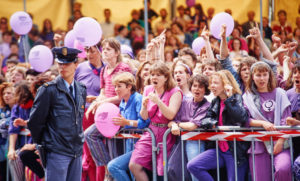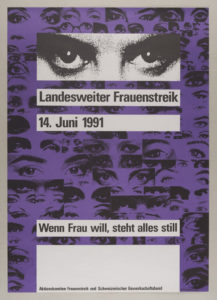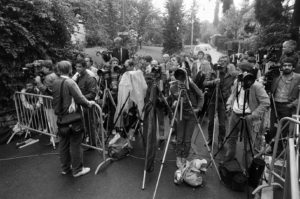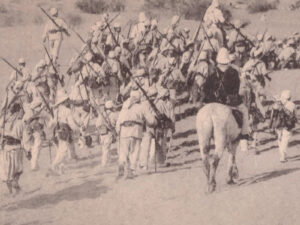
Swiss National Museum / ASL
The women’s strike day of 1991
In 1991, Swiss women went on strike for the first time. They took to the streets to demonstrate for equal pay, and equal opportunities in general. 28 years later, many of their demands are still unmet.
On 14 June 1991 – 10 years after the introduction of the law against gender discrimination – around 500,000 Swiss women and some Swiss men went on strike under the slogan ‘Wenn Frau will, steht alles still’ (If women so choose, everything stops). Top of their list of demands was equal pay for work of equal value. Most of Switzerland’s women’s organisations took part in the event, which had originally been initiated by a number of female workers in the watch-making industry in the Vallée de Joux. After the national strike of 1918, it was the biggest strike Switzerland had ever experienced.
Originally, the idea for the women’s strike day came from the USA, where the first mass strike by women took place in 1970. Tens of thousands of women took to the streets and campaigned for abortion rights, equal opportunities in the job market and free childcare during working hours. The protest took place mainly in urban areas, principally in New York. It was followed by women’s strikes in a number of other countries, including Iceland, Spain and Switzerland.
Incidentally, the first, smaller-scale, women’s strike happened not in the USA, but in Austria. In May 1893, around 700 women working at several textile factories walked off the job. They demanded a reduction in working hours to ten hours a day, a minimum wage of eight kronen a week – their earnings at the time were around one krone – and a day off on 1 May. After two weeks, their employers gave in and agreed to their demands. The event went down in Austrian history as the ‘strike of the 700’.

Poster for the nation-wide women’s strike of 14 June 1991. The design was created by graphic artist Agnes Weber.
Swiss National Museum
FIRST WOMEN’S STRIKE IN SWITZERLAND – 1945
In Switzerland too, women had already taken action before 1991. In 1945, immediately after the end of the Second World War, female staff at the firm Schweizerische Industriegesellschaft für Schappe (SIS) in Arlesheim went out on strike. SIS manufactured cheap yarn from silk waste, and most of its employees were women. Wages in that industry were poor, and those of female employees were almost 25% lower again compared to those of their male colleagues. So in June 1945, the 400 or so female staff of SIS went on strike. The strike lasted a month, and attracted a lot of attention in Switzerland. In the end, the strikers succeeded in pushing through their demands. A collective bargaining agreement was signed, and wages and days off were increased.
Since then, the Swiss have downed tools on numerous occasions. Some of these strikes were organised by women. However, they were mostly local or regional. It was in a national strike that women first took to the streets en masse. Now, they’re back for round two. The organising body anticipates that around 100,000 will take part. If their expectations are correct, 14 June 2019 will go down in history as one of the country’s biggest strikes.
Incidentally, voting rights for women was a key issue in the national strike of 1918. It was on the list of demands above points such as the 48-hour week, or pensions and disability insurance.
Report on the women’s strike of 14 June 1991.
Video: SRF
Another historic day for women: 30 years ago, on 30 April 1989, the Landsgemeinde (cantonal assembly) of the Canton of Appenzell Ausserrhoden in Hundwil decided to give voting rights to women. 18 years after the voters of Switzerland had done so, Ausserrhoden was the second-to-last canton to bring in voting rights for women at cantonal level.
Swiss National Museum







